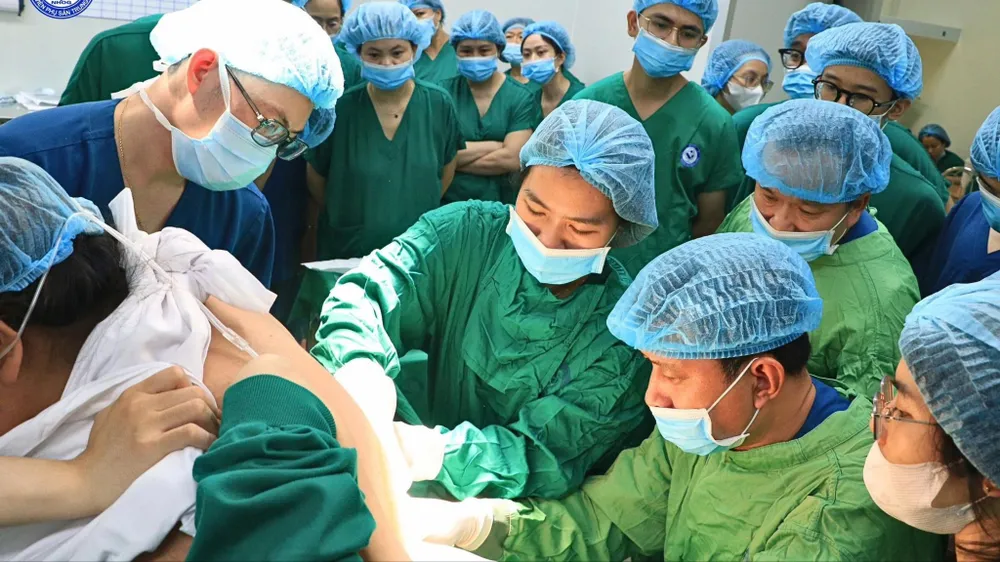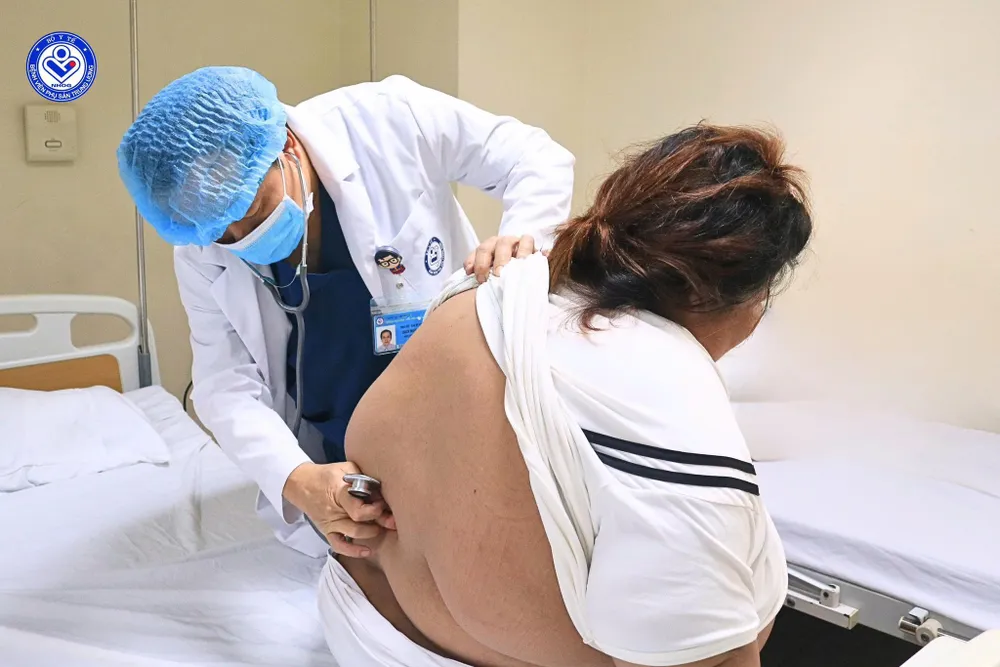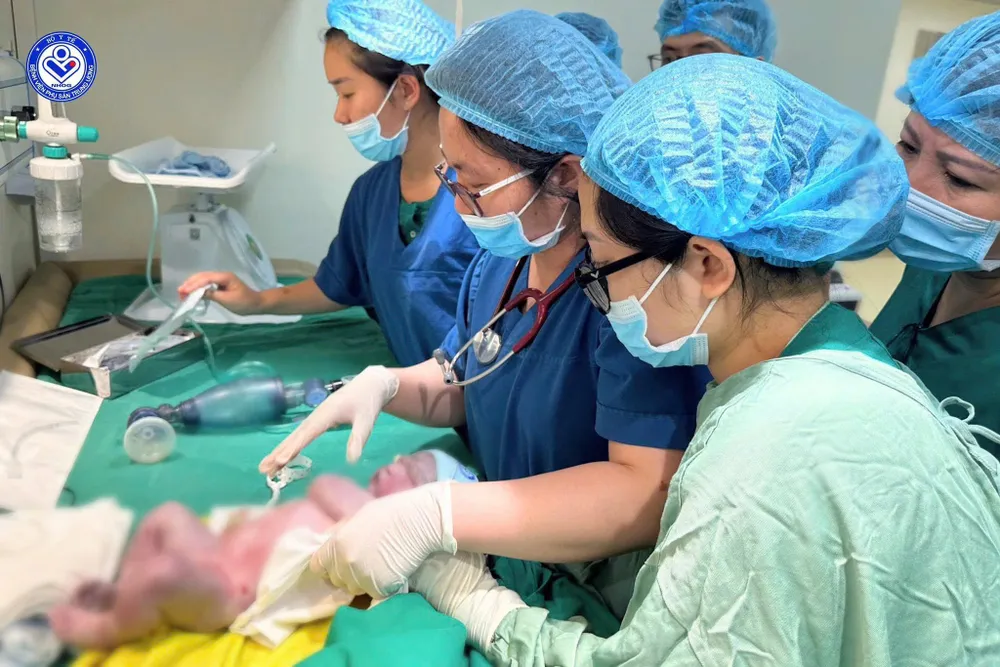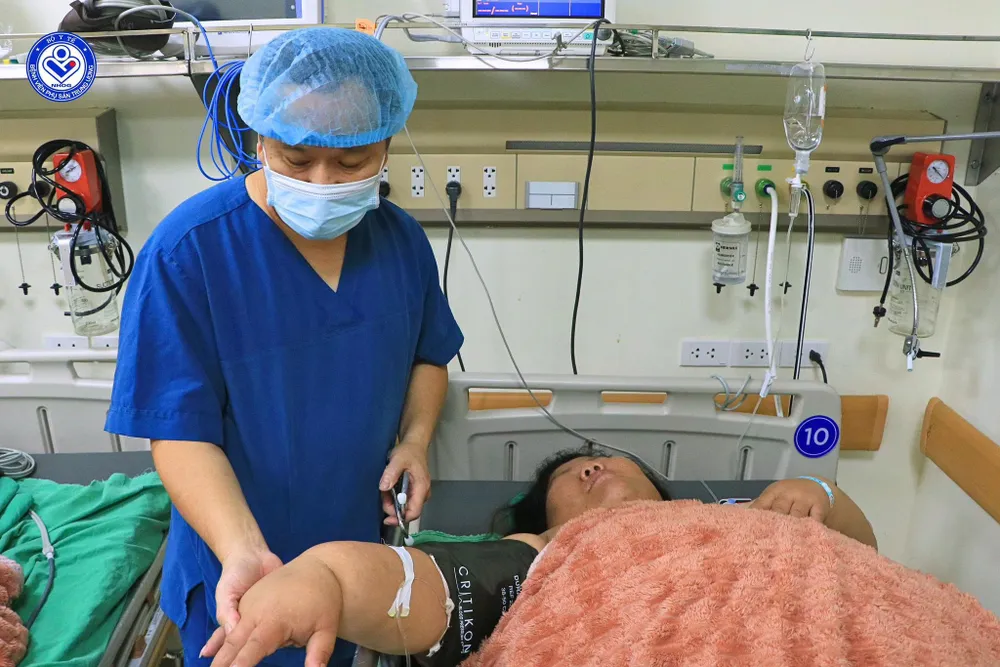
Pregnant woman D. was transferred from Vinh Phuc Obstetrics and Pediatrics Hospital to the Central Obstetrics and Gynecology Hospital in a high-risk situation for both mother and fetus due to uncontrolled weight gain, her weight before pregnancy was about 140kg and she gained 38kg during pregnancy.
With a large weight, preeclampsia and diabetes, normal delivery is almost impossible. Even the option of cesarean section has a series of potential risks in anesthesia, surgery and post-operative resuscitation.

Realizing that delaying the cesarean section could worsen the prognosis for the mother and fetus, anesthesiologists and obstetricians urgently consulted and decided to perform an emergency cesarean section, while simultaneously developing a detailed and rigorous plan, ready for two scenarios including regional anesthesia (spinal anesthesia or epidural anesthesia) or endotracheal anesthesia.

For the above reasons, as soon as we received information about such a case, the anesthesia team carefully examined the patient, assessed the respiratory condition, airway and other related issues to be able to come up with an effective and safe anesthesia plan. At the same time, all equipment, machinery and medicines were prepared for possible situations.
Doctors rely on ideal height and weight to calculate the dosage of anesthesia drugs to ensure enough drugs for deep anesthesia and enough muscle relaxation to facilitate endotracheal intubation, while also considering avoiding hypotension and affecting hemodynamics - which can easily occur in obese pregnant women undergoing anesthesia.

During the surgery, Dr. Dang Quang Hung, Deputy Head of the Department of Obstetrics and Gynecology, who directly performed the surgery, said that the most difficult part of the surgery was that the pregnant woman's abdominal wall was very thick, making it difficult to access the uterus and remove the fetus.
The prolapsed abdominal fat tissue makes the surgeon's operations much more difficult. In the context of hypertension and diabetes, the risk of surgical site infection and postoperative complications also increases significantly. During surgery, due to the large abdominal fat mass and fetal compression, the risk of cardiopulmonary complications increases.
The surgery therefore requires a smooth coordination between anesthesia and surgery to quickly and safely deliver the fetus, while "releasing" the hemodynamic burden on the mother.


After nearly 1 hour, the surgery was successful. The baby boy weighed 3.4 kg, was rosy, cried loudly, and was immediately transferred to the Neonatal Center for monitoring after birth. However, on the mother's side, although hemodynamics were stable, she still had to continue to face many respiratory risks, so she was closely monitored in the post-operative room.
Source: https://www.sggp.org.vn/san-phu-nang-178kg-co-nhieu-benh-ly-nguy-hiem-duoc-mo-lay-thai-thanh-cong-post808516.html









![[Photo] President Luong Cuong receives Finnish Ambassador to Vietnam Keijo Norvanto](https://vphoto.vietnam.vn/thumb/1200x675/vietnam/resource/IMAGE/2025/8/15/9787f940853c45d39e9d26b6d6827710)


















![[Photo] The special solidarity relationship between Vietnam and Cuba](https://vphoto.vietnam.vn/thumb/1200x675/vietnam/resource/IMAGE/2025/8/15/5f06c789ab1647c384ccb78b222ad18e)
![[Photo] Binh Khanh Bridge Ho Chi Minh City is ready to reach the finish line](https://vphoto.vietnam.vn/thumb/1200x675/vietnam/resource/IMAGE/2025/8/14/b0dcfb8ba9374bd9bc29f26e6814cee2)

![[Photo] Firmly marching under the military flag: Ready for the big festival](https://vphoto.vietnam.vn/thumb/1200x675/vietnam/resource/IMAGE/2025/8/15/86df2fb3199343e0b16b178d53f841ec)































![[Photo] President Luong Cuong receives Finnish Ambassador to Vietnam Keijo Norvanto](https://vphoto.vietnam.vn/thumb/402x226/vietnam/resource/IMAGE/2025/8/15/9787f940853c45d39e9d26b6d6827710)




































Comment (0)